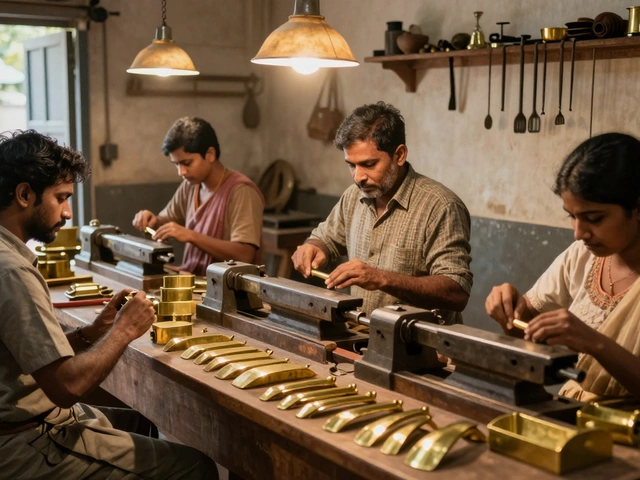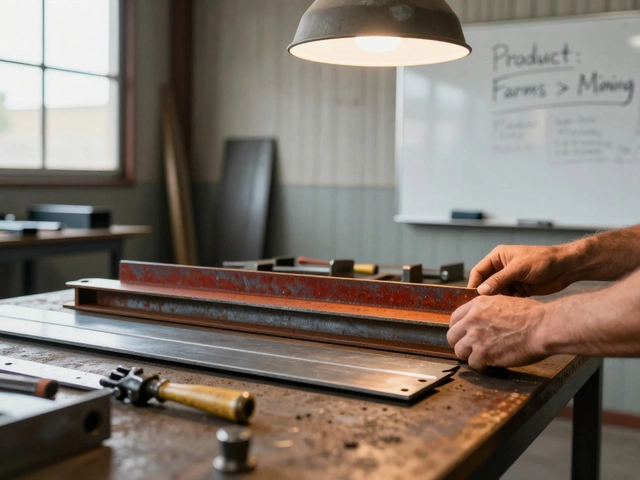Industrial Startup Guide: How to Launch and Grow Your Manufacturing Business
Starting a factory feels like a huge leap, but breaking it down into bite‑size steps makes it doable. You don’t need a PhD in engineering to get going – just a clear plan, the right resources, and a sense of what the market wants right now.
On this page you’ll find quick guides, data‑backed product ideas, and real examples from other entrepreneurs. Think of it as a toolbox you can dip into whenever you hit a roadblock.
Key Steps to Start a Manufacturing Venture
1. Define Your Niche. Before you buy any machines, ask yourself what problem you’re solving. Are you making eco‑friendly furniture, a new textile blend, or a high‑demand electronic component? The more specific you get, the easier it is to target customers.
2. Validate Demand. Use tools like Google Trends, industry reports, or even a simple survey to confirm people actually want your product. Our post “Highest Demand Product Ideas for Manufacturing Startups” lists hot categories for 2025 – from smart home gadgets to recyclable packaging.
3. Map the Production Process. Sketch out each step: raw material sourcing, machining, assembly, quality check, packaging. The classic “5 M’s of Manufacturing” (Man, Machine, Material, Method, Measurement) helps you spot gaps early.
4. Choose the Right Location. Look for places with reliable power, good logistics, and supportive policies. If you’re in India, check out the analysis in “Why India Isn’t the World’s Manufacturing Hub” to avoid common pitfalls.
5. Secure Funding. Estimate all costs – land, equipment, labor, permits, and a buffer for surprises. Our guide “How Much Money Do You Really Need to Start a Small Scale Business in 2025?” breaks down numbers so you can pitch investors with confidence.
6. Get the Necessary Licenses. Compliance isn’t optional. Whether you’re handling chemicals (see “Banned Chemicals in India”) or exporting textiles, make sure you have the right permits to avoid fines.
7. Build a Lean Team. Hire people who can wear multiple hats at the start. A skilled supervisor, a sales lead, and a technician are often enough until you scale.
Top Trends Shaping 2025 Industrial Startups
Automation & IoT. Small factories are adopting affordable robots and sensors to boost output and cut errors. You can start with a single smart conveyor belt and expand as you grow.
Sustainable Materials. Customers are demanding greener products. Look at “Most Profitable Textile Businesses” for ideas on recycled fibers or low‑impact dyes.
Localized Production. Shipping costs are rising, so many brands are moving production closer to key markets. If you serve the US, consider a partner in Gujarat or Hyderabad to cut lead times.
Data‑Driven Decision Making. Simple software can track inventory, machine uptime, and sales in real time. The data helps you spot bottlenecks before they become costly.
Each of these trends links back to one of our articles, giving you a deeper dive when you need it. For example, the “Three Pillars of Manufacturing” post explains how quality, efficiency, and production balance out in a modern plant.
Starting an industrial venture is a marathon, not a sprint. Keep revisiting these steps, stay curious about new tech, and don’t be afraid to adjust your plan as the market shifts. With the right groundwork, your manufacturing startup can move from a sketch on a napkin to a thriving operation.
Step-by-Step Guide to Launching a Small Scale Industry Successfully
Discover how to set up a small scale industry, from choosing the right product to licenses and growth tips. Get practical advice for a successful start.
Read More




